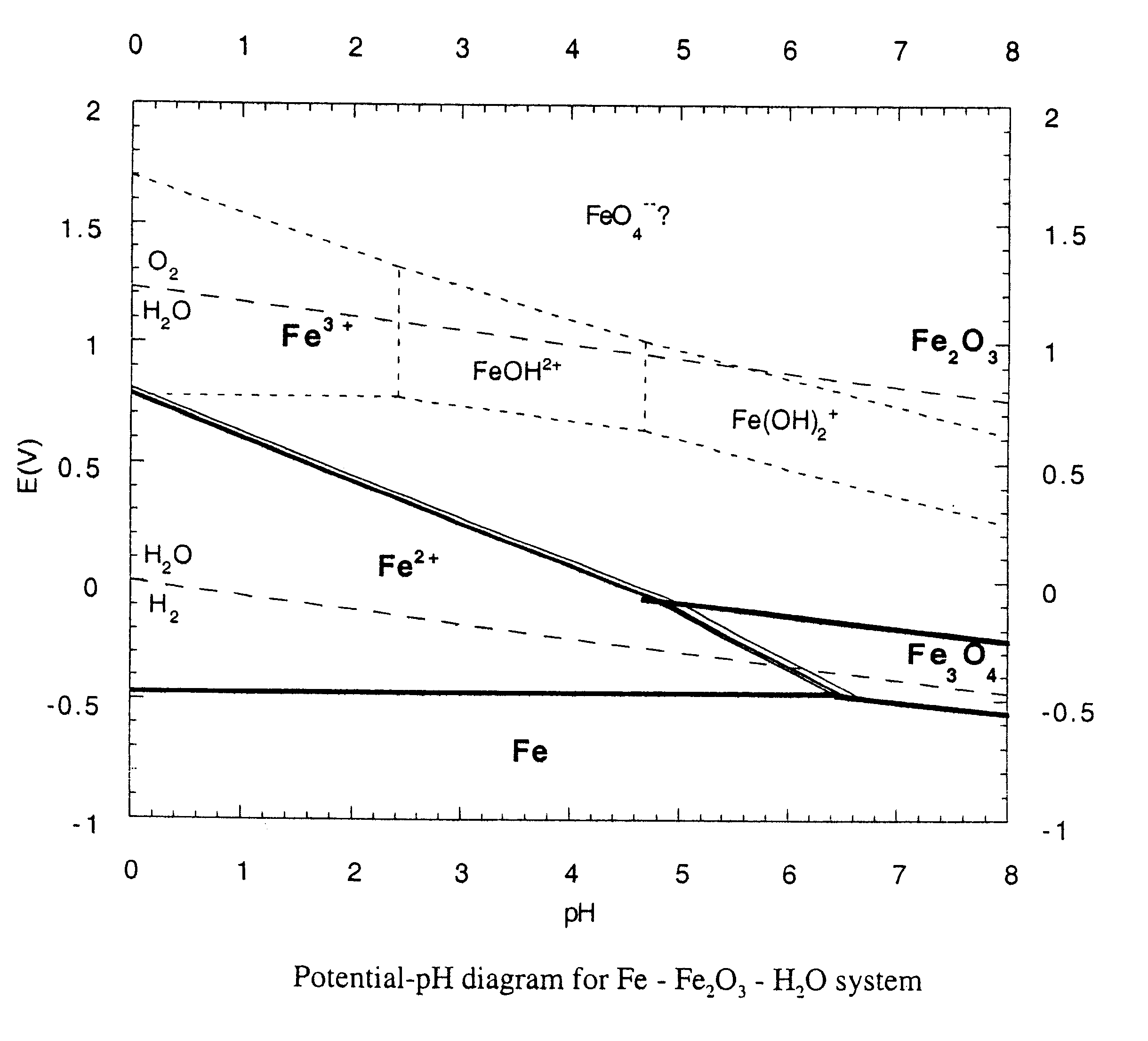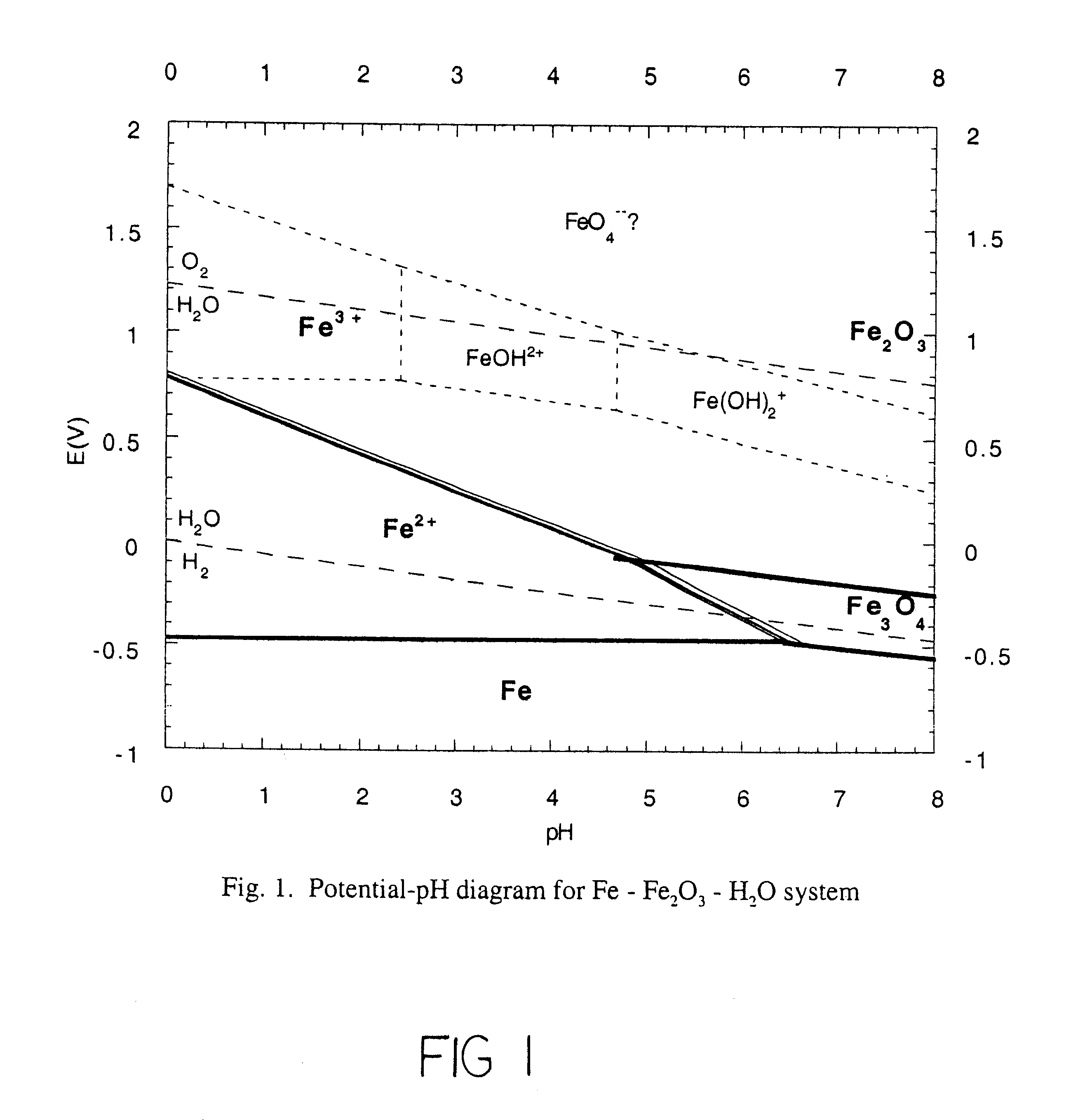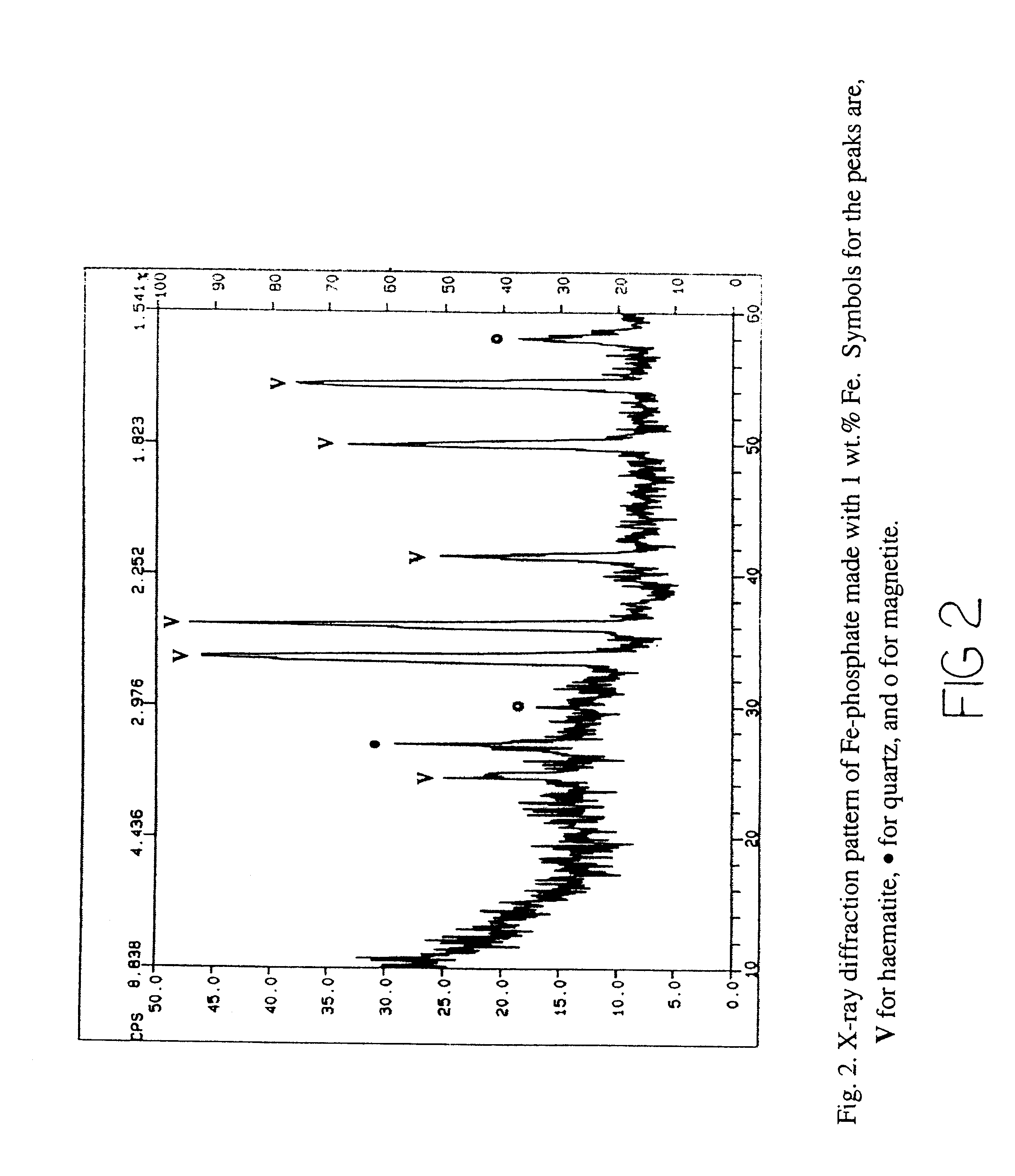Chemically bonded phosphate ceramics of trivalent oxides of iron and manganese
a technology of trivalent oxides and phosphate ceramics, which is applied in the direction of climate sustainability, nuclear engineering, solid waste management, etc., can solve the problems of increasing the cost of the product, weakening the product, and corroding the tin chloride, so as to reduce the oxides, slow the setting rate, and reduce the haematite
- Summary
- Abstract
- Description
- Claims
- Application Information
AI Technical Summary
Benefits of technology
Problems solved by technology
Method used
Image
Examples
example 2
Dye cast haematite ceramic.
Haematite was mixed thoroughly with an approximately equal weight of sand. Approximately 0.6 wt. % of iron powder were added to this mixture followed by the addition of approximately 3.5 to 4 wt. % of 85 wt. % concentrated phosphoric acid solution and 8 to 10 wt. % of water. The entire mixture was mixed for a few minutes and was then cast into a brick in a brick mold by applying a pressure of 1000 psi. When taken out of the mold, it was hard and set well after a day. The cost of the phosphoric acid in the brick was only $0.01 per pound of brick.
example 3
Red mud ceramic.
Red mud is a highly alkaline waste resulting from the Bayer process extraction of alumina from bauxite. It is rich in haematite and hence may be used as a raw material for forming iron phosphate ceramics. A red mud brick was made by dye-casting it. Sand was added to an approximately equal weight of red mud which had a water content of 30 wt. %. The red mud and sand were mixed in a mixer capable of forming a uniform consistency of moldable clay. In one instance, a table top mixer was utilized to generate a mixture having a viscosity of approximately 200 cp (centipoise). Approximately 12.5 wt. % of 85 wt. % of concentrated H.sub.3 PO.sub.4 were then added. After mixing for five minutes, the pH of the resulting solution was 3.11. Approximately 0.18 wt. % of iron was then added and the entire slurry mixed for 25 minutes. A thick mass formed which was pressed at a pressure of 1000 psi in a brick mold. The resulted pressed mass hardened into a solid brick in approximately ...
example 4
Swarf ceramic.
Swarfs are machining wastes containing iron in them. In storage, they oxidize and form magnetite and haematite. While they are pyrophoric wastes and hence are a liability, they are ideal raw materials for forming iron phosphate ceramics. This is because the wastes contain a small amount of elemental iron that has not rusted, and they also contain different iron oxide forms that include haematite and magnetite.
The swarf waste utilized in this example was a fine ground black material containing traces of machining oil. This powder (comprising from 70 to 80 wt. %) was mixed with from 10 to 16 wt. % of waste phosphoric acid. Small amounts of Fe and Fe.sub.2 O.sub.3 were also added to some samples. TABLE 2 gives the composition used herein in forming ceramics. In all cases, the ingredients were mixed only for a few minutes, and the mixture was transferred into a plastic mold and was pressed at 1000 psi and kept under pressure for 10 minutes. When each sample was taken out, ...
PUM
| Property | Measurement | Unit |
|---|---|---|
| weight percent | aaaaa | aaaaa |
| wt. % | aaaaa | aaaaa |
| weight percent | aaaaa | aaaaa |
Abstract
Description
Claims
Application Information
 Login to View More
Login to View More - R&D
- Intellectual Property
- Life Sciences
- Materials
- Tech Scout
- Unparalleled Data Quality
- Higher Quality Content
- 60% Fewer Hallucinations
Browse by: Latest US Patents, China's latest patents, Technical Efficacy Thesaurus, Application Domain, Technology Topic, Popular Technical Reports.
© 2025 PatSnap. All rights reserved.Legal|Privacy policy|Modern Slavery Act Transparency Statement|Sitemap|About US| Contact US: help@patsnap.com



